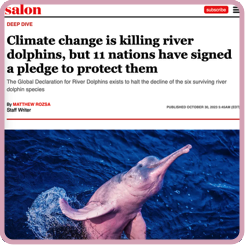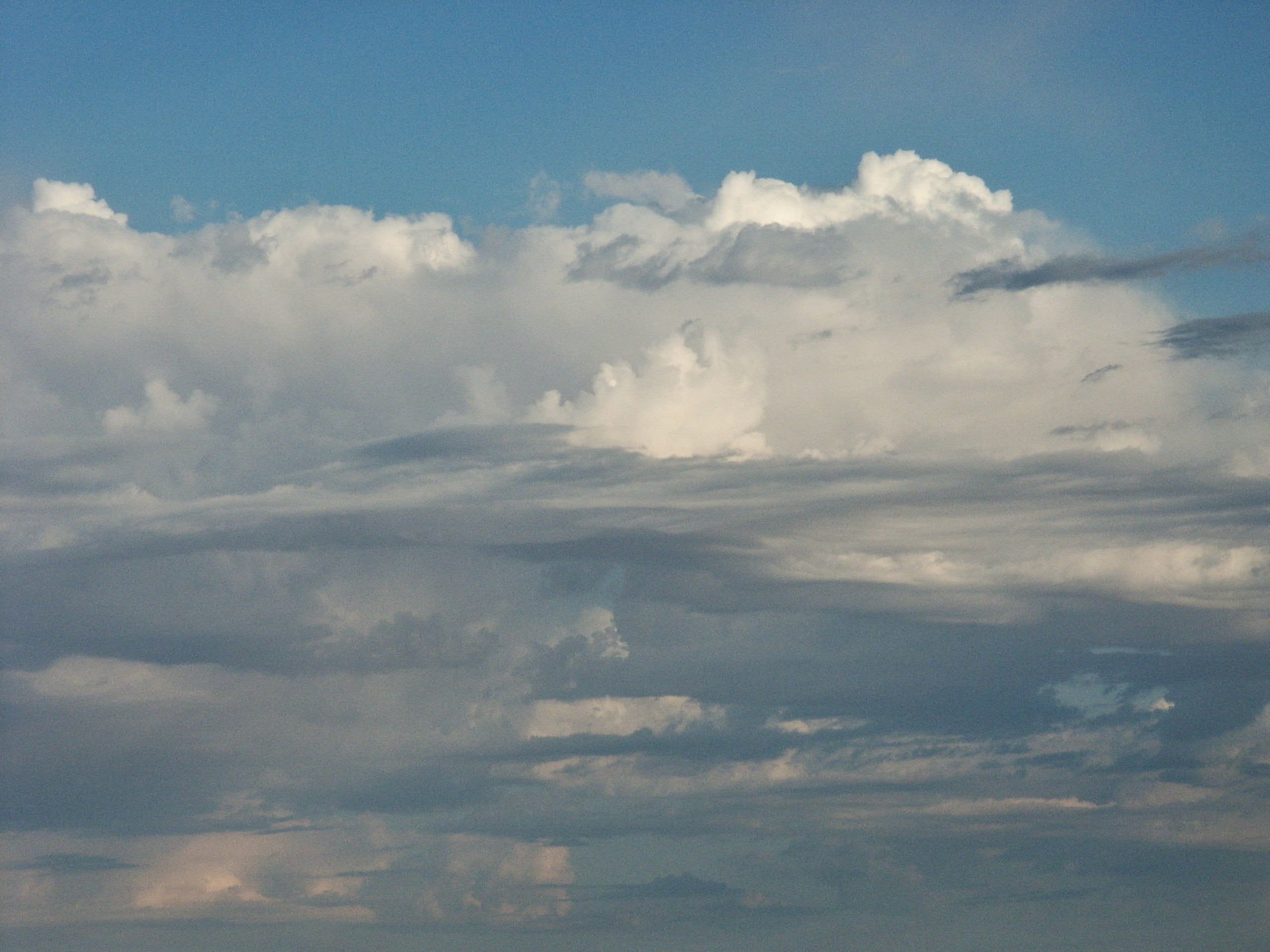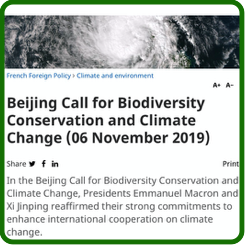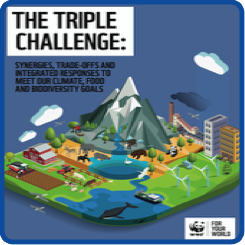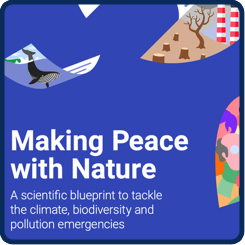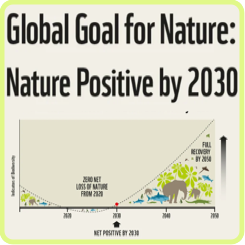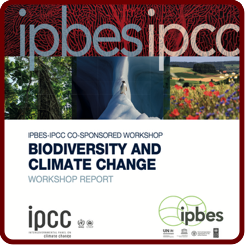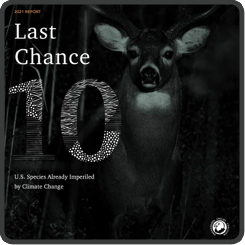
🔝
🔝
Information
Climate Adaptation Knowledge Exchange (CAKE)
· “Welcome to the world’s largest and most used source of climate adaptation case studies
and resources. Share lessons, ideas, and opportunities with others in the field.”
Climate Change Response Framework
· “...a collaborative effort that addresses the major challenges that land managers face when
considering how to integrate climate change into their planning and management. The
Northern Institute of Applied Climate Science (NIACS) leads the Climate Change Response
Framework with support from many partners...Currently, the Framework is being applied in
several locations in the eastern U.S. through coordinated place-based projects:
Central Appalachians, Central Hardwoods, Mid-Atlantic, New England, Northwoods, and
· Defunct ~ website appears abandoned
Periodicals
Climate Change Biology at PeerJ
Bibliographies
Bibliography on climate change & its impacts on biodiversity (ASIL Wildlife Interest Group)
· Last updated in 2000
Bibliography on climate change and botanic gardens [Australia]
Biodiversity bibliography: Ecology, economics & policy [click on “climate change”]
Institutions ~ International organizations
Biodiversity - our strongest natural defense against climate change
Convention on Biological Diversity
Ad Hoc Technical Expert Group (AHTEG) on Biodiversity and Climate Change
Climate Change Specialist Group
Integrated Planning for Climate Change & Biodiversity
World Conservation Monitoring Center (UNEP)
Institutions ~ US government
U.S. Department of Agriculture - Climate Change Resource Center
National Climate Change and Wildlife Science Center
Regional Climate Science Centers
National Fish, Wildlife & Plants Climate Adaptation Strategy
Institutions ~ Research & professional associations
Institute for Climate Change Biology (IGCB) @ University of Michigan
USA National Phenology Network
Yale Center for Biodiversity and Global Change
Institutions ~ NGOs
· Note that this is a very incomplete listing; many (maybe most) NGOs working on biodiversity
conservation will have a programmatic focus related to the threat of climate change. While
it will require some digging, more such NGOs will be available at (1) the Biodiversity-focused NGOs
section of the Biodiversity Institutions page and (2) the extensive NGOs page.
Biodiversity Research Institute
Biodiversity for a Livable Climate
Center for Biological Diversity
Protecting nature to halt climate catastrophe
Critical Ecosystem Partnership Fund
Conservation in a Changing Climate
Max Planck-Yale Center for Biodiversity Movement and Global Change
Wildlife Conservation Society (WCS)
Conservation translo ations, managed translocation & assisted migrations
Assisted migration @ Forest Gene Conservation Association (FGCA)
Modeling
NatureServe Climate Change Vulnerability Index
· “...identifies plant and animal species that are particularly vulnerable to the effects of climate
change.”
Select readings on climate change biology
· In reverse chronological order.
Natural hybridization reduces vulnerability to climate change
· 2023 ~ Chris J. Brauer ~ Nature
· Under climate change, species that cannot track their niche through range changes rely heavily on
genetic variation to adapt.
· Estimates environmental niche models and genomic vulnerability of related rainbow fish.
· Adaptive infiltration helps in the evolutionary rescue of species with climate changes.
Drivers of Biodiversity Loss: Climate Change
· 2022 ~ Lindsay Rosa ~ Defenders of Wildlife
· Climate change is fundamentally changing the ecosystems inhabited by many endangered species
· About 1 million species are at risk of extinction
· Comprehensive national biodiversity strategy can help safeguard the natural resources
Explainer: Can climate change and biodiversity loss be tackled together
· 2022 ~ Daisy Dunne ~ Carbon Brief
· Climate change and biodiversity loss are already reinforcing each other
· Man-made climate change is already affecting the severity of extreme events
· The loss of biodiversity around the world is also having a major impact on humanity.
Insects and recent climate change
· 2021 ~ Christopher A. Halsch, et al. ~ Proceedings of the National Academy of Sciences (PNAS)
· Discusses how insects respond to climate change and fluctuations, including summarizing past
long-term monitoring literature and discussing how climate change will have considerable impacts
in the future in more powerful ways than habitat loss.
· Provides a case study of butterflies in Northern California that were not threatened by habitat loss to
reinforce that insect population declines from climate change is alarming, even in the absence of
habitat loss.
· Suggests how the methods for collecting insect-related data could be improved for long-term datasets
so that the impact of climate change on insects can be more effectively studied.
Spotlighting Interactions of the Science of Biodiversity and Climate Change
· 2020 ~ Hans-Otto Pörtner ~ IPBES-IPCC Co-sponsored workshop
· Focuses on opportunities to meet climate change and biodiversity-related targets.
· Spotlights synergies and trade-offs between biodiversity conservation and climate change
mitigation and adaptation
· Climate change is already impacting nature – from genes to ecosystems
Microclimate shifts in a dynamic world
· 2020 ~ Jonas J. Lembrechts, Ivan Nijs ~ University of Antwerp
· “A better understanding of microclimate change is standing at the crossroads of the climate and
the biodiversity crisis and is fundamental to tackling of both"
· Uses understory microclimate dynamic models to demonstrate that macroclimate changes,
especially those from climate change, do not always drive the ecology of Earth's biodiversity.
Climate Change and Ecosystems: Threats, Opportunities, and Solutions
· 2020 ~ Yadvinder Malhi ~ The Royal Society
· Threats: Climate change is causing changes in natural ecosystems, thus, threatening biodiversity,
and global food production.
· Opportunities: Protecting climate refugia can provide many conservation benefits while also being
a relatively low-cost conservation strategy.
· Solutions: Nature-based strategies that can mitigate climate change hazards: (a) Enhanced vegetation
cover and green space, (b) Construction of structures that restore natural hydrologic function,
(c) Restoring natural protective habitats along coastlines.
We need more realistic climate change experiments for understanding ecosystems of the future
· 2019 ~ Lotte Korell ~ Global Change Biology
· Experiments regarding manipulating climate change conditions in accordance with future projections,
which include precipitation and temperature, are imperative in understanding and predicting the effects
of climate change on ecosystems and plant communities.
· Features necessary to accurately predict the effect of climate ecosystems: (a) Small-scale experiments
need to consider species that can respond to climate change and the influence of dispersal limitations,
(b) Account for scale-dependent responses when comparing responses among communities. (c) Experimental
approaches, such as measurement of demography across the life cycles of plants.
The International Movement to Protect Half the World
· Subtitle: Origins, Scientific Foundations, and Policy Implications
· 2018 ~ Harvey Locke ~ Yellowstone to Yukon Conservation Initiative
· Explores the Nature Needs Half or Half Earth movement to reverse global declines of species and
ecosystems
· “Though grounded in ecology, it is an effort to set an inspiring social goal justified by conservation
science as opposed to simply providing scientific findings and predictions in the hope that they might
be useful to makers of public policy.”
Impacts of climate on the biodiversity-productivity relationship in natural forests
· 2018 ~ Songlin Fei ~ Nature
· Highlights the relationship between biodiversity and productivity through the biodiversity-
productivity relationship (BPR)
· Climate change is a potential determinant of the contrast BPR observed over a large spatial scale
· Both biotic factors and abiotic factors impact BPRs
Applying evolutionary biology to address global challenges
· 2014 ~ Scott P. Carroll, et al. ~ University of California Davis
· Human induced climate change affects the rate and direction of evolution which threaten human health, food security, and biodiversity.
· Highlights the progress and gaps in genetic, developmental, and environmental manipulations
that focus on the rate and direction of evolution or reduce the disconnect between organisms and human-altered environments.
· “Applied evolutionary biology has the potential to serve society as a predictive and integrative
framework for addressing practical concerns in applied biology that share at their core the basic evolutionary principles governing life.”
A framework for community interactions under climate change
· 2010 ~ Sarah E. Gilman, Mark C. Urban, Joshua Tewksbury, George W. Gilchrist, Robert D. Holt
· Claremont Colleges
· Analyzes the impact of species interactions in different types of communities and explain how
those interactions can help or harm the community's efforts to adapt to climate change.
· Biodiversity is inextricably linked to adaptability as having more species in an ecosystem
allows for more variability of ranges of tolerance and the availability of far more niches
than a community with little diversity.
Impacts of Climate Change on Marine Organisms and Ecosystems
· 2009 ~ Andrew S. Brierley and Michael J. Kingsford ~ Current Biology
· Highlights the importance of the ocean and marine ecosystems and the necessity of intervening to
reduce carbon emissions before critical tipping points are passed, leading to ecosystem decline.
· Suggests that while bioengineering may provide some alleviation, there are risks, and the primary
way to protect these ecosystems is to stop climate change.
· Discusses current effects of climate change on marine ecosystems and processes, including ocean
acidification, reduced oxygen concentration, and sea-level rise.
· Predicts both future effects as well as how these ecosystems can help mitigate climate change impacts.
Biodiversity management in the face of climate change: A review of 22 years of recommendations
· 2009 ~ Nicole E. Heller, Erika S. Zavaleta ~ University of California
· Reviews over 500 policy recommendations from over 100 publications
· Explains potential solutions to declining biodiversity as a result of climate change and how effective each of these solutions are.
· “Broadly, adap tation requires improved regional institutional coordination, expanded spatial
and temporal perspective, incorporation of climate change scenarios into all planning and
action, and greater effort to address multiple threats and global change drivers simultaneously
in ways that are responsive to and inclusive of human communities.”
Biodiversity, climate change, and ecosystem services
· 2009 ~ Harold Mooney ~ Current opinion in Environmental Stability
· Ecosystem capacity to deliver services is under immense stress due to climate change, requiring adaptation
and new tools to maintain and restore biological and social systems.
· A functioning ecosystem delivers services to benefit society, such as food, clean water, and cultural values,
but human activity is limiting ecosystem services and biodiversity.
· Species and populations are being lost as well as parts of communities and ecosystems affected by the
changing climate.
Five Potential Consequences of Climate Change for Invasive Species
· 2008 ~ Jessica Hellmann, James Byers, Britta Bierwagen, Jeffrey Dukes ~ Society for Conservation Biology
· Evaluates the impact of climate change on ecosystems through the lens of invasive species; with
a latitudinal shift in the climate, ecosystems may be exposed to new invasive species that can
severely impact biodiversity.
· Potential Consequences: “(1) altered mechanisms of transport and introduction, (2) altered climatic
constraints on invasive, species, (3) altered distribution of existing invasive species, (4) altered
impact of existing invasive species, and (5) altered effectiveness of management strategies for
invasive species.
Evolutionary Responses to Climate Change
· 2007 ~ David K. Skelly ~ Society for Conservation Biology
· Several organisms have shown genetic variation, for example, a species of frog has undergone
localized evolution in thermal tolerance as a response to a changing climate.
· Reasons some species will be unable to evolutionarily respond fast enough to keep up with
climate change: (a) Time lag between change and response. (b) Lack of genetic variation,
(c) Erosion of genetic variation.
Ecological and evolutionary responses to recent climate change
· 2006 ~ Camille Parmesan ~ University of Texas at Austin
· “Rather, some of the best-understood cases are presented to illustrate the complex ways in which
various facets of climatic change impact wild biota. The choice of studies for illustration attempts
to draw attention to the taxonomic and geographic breadth of climate-change impacts and to the
most-recent literature not already represented in prior reviews.”
· Shows how organisms and species have evolved and adapted phenotypically, genetically, distributively,
and behaviorally as a result of climate-change related factors.
Validation of species-climate impact models under climate change
· 2005 ~ Miguel B. Araújo, Richard G. Pearson, Wilfried Thuiller, Markus Erhard ~ University of Oxford
· “[R]ecent studies have demonstrated significant variability in model predictions and there
remains a pressing need to validate models and to reduce uncertainties.”
· Models are not always reliable and need significantly more data and analytics in order to determine their veracity.
Shifts in phenology due to global climate change: The need for a yardstick
· 2005 ~ Marcel E. Visser and Christiaan Both ~ Proceedings of the Royal Society B
· Highlights (1) the importance of understanding the consequences and magnitude of phenological
shifts and (2) the critical need for a measure to determine how much a species should be shifting to
match climatic changes in its surroundings.
· Argues that shifts in food abundance can be used as a proxy to see whether a species shifts its phenology
too little or too much compared to this measure.
· Calls for researchers with long-term phenological datasets to link their data with proxy datasets to
expand the documentation of climate change on the mismatches in phenological timing due to climate
change.
The impact of climate change on birds
· 2004 ~ Humphrey Q. P. Crick ~ IBIS International Journal of Avian Science
· Examines the impact of climate change on the population dynamics and phenology of birds, including the
timing of migration and nesting.
· Highlights the impact of climate change on birds worldwide, including shifts in distributions and
geographical range, alterations to the timing of migration and nesting, changes in demographic factors such
as breeding performance and survival, declines in populations, and the spectrum of capacities of different
species to adapt.
· Cautions that the approach presented in this paper are still at the predictive modeling stage and that
more methods must be developed, and more research must be conducted to test the predictions.
A globally coherent fingerprint of climate change impacts across natural systems
· 2003 ~ Camille Parmesan, Gary Yohe ~ University of Texas at Austin, Wesleyan University
· “This approach [climate change being firstly responsible for displacement of species], however,
effectively ignores small, systematic trends that may become important in the longer term. Such
underlying trends would be confounded (and often swamped) by strong forces such as habitat loss.”
· Uses metadata in order to evaluate the strength of the climate fingerprint on the geographic movement
polewards of species and communities.
Ecological and evolutionary traps
· 2002 ~ Martin A. Schlaepfer, Michael C. Runge, Paul W. Sherman ~ Cornell University
· “Ecological traps are part of a broader phenomenon, evolutionary traps, involving a dissociation
between cues that organisms use to make any behavioral or life-history decision and outcomes
normally associated with that decision. A trap can lead to extinction if a population falls below a
critical size threshold before adaptation to the novel environment occurs.”
· Evaluates human disturbances on altering natural environments that create ecological traps and
offers solutions for the future through wildlife management and conservation
Range Shifts and Adaptive Responses to Quaternary Climate Change
· 2001 ~ Margaret B. Davis and Ruth G. Shaw ~ Science
· Looks at shifts in the latitude or elevation of trees in response to climate change, examines how
populations have become established at higher latitudes, discusses how adaptation has occurred
in past responses to these shifts, and highlights how genetic variability serves as the basis for
evolutionary change and declines from north to south.
· Discusses how adaptation occurs during migration and investigates adaptations that have occurred
in modern tree populations, including past range shifts under which tree populations are now adapted
to current conditions.
· Discusses some of the limitations to the rate of adaptation in the face of climate change, including
multiple reasons why the processes outlined may not occur as readily as they did in the past.
Ecological Consequences of Recent Climate Change
· 2001 ~ John P. McCarty ~ University of Maryland
· A broad overview of the potential effects of climate change on biodiversity, such as the threat
posed by declining precipitation, a changing food supply, and changes in geographic range.
· These threats pose significant risks to ecosystems, with changes in weather patterns leading to
ecological disruption as food chains fail and primary producer populations decline.
Biological consequences of global warming: Is the signal already apparent?
· 2000 ~ Lesley Hughes ~ Cell Press
· Changes in atmospheric CO2 concentration and global temperature, directly affect: (1) Metabolic,
photosynthetic, and developmental rates in organisms, (2) Elevation levels needed for species,
(3) Life cycle events that rely on environmental cues, (4) Species with short generation times and
rapid population growth, leading to microevolutionary change.
· The past century of anthropogenic climate change is already affecting the physiology, distribution,
and phenology of species.
Climate change & biodiversity
Near-synonyms for “climate change & biodiversity” include climate change biology and species redistribution science.
Contents of this page:
· Information
· Periodicals
· Bibliographies
~ US government
~ Research & professional associations
~ NGOs
· Conservation translocations, managed translocation & assisted migration
· Modeling
· Select readings on climate change biology
Also see:
Jason Dai & Kate Danziger (2023), Charlene Duong & Savana Vida (2022) and Makayla Wigder (2021) of Brandeis University contributed to this page.
